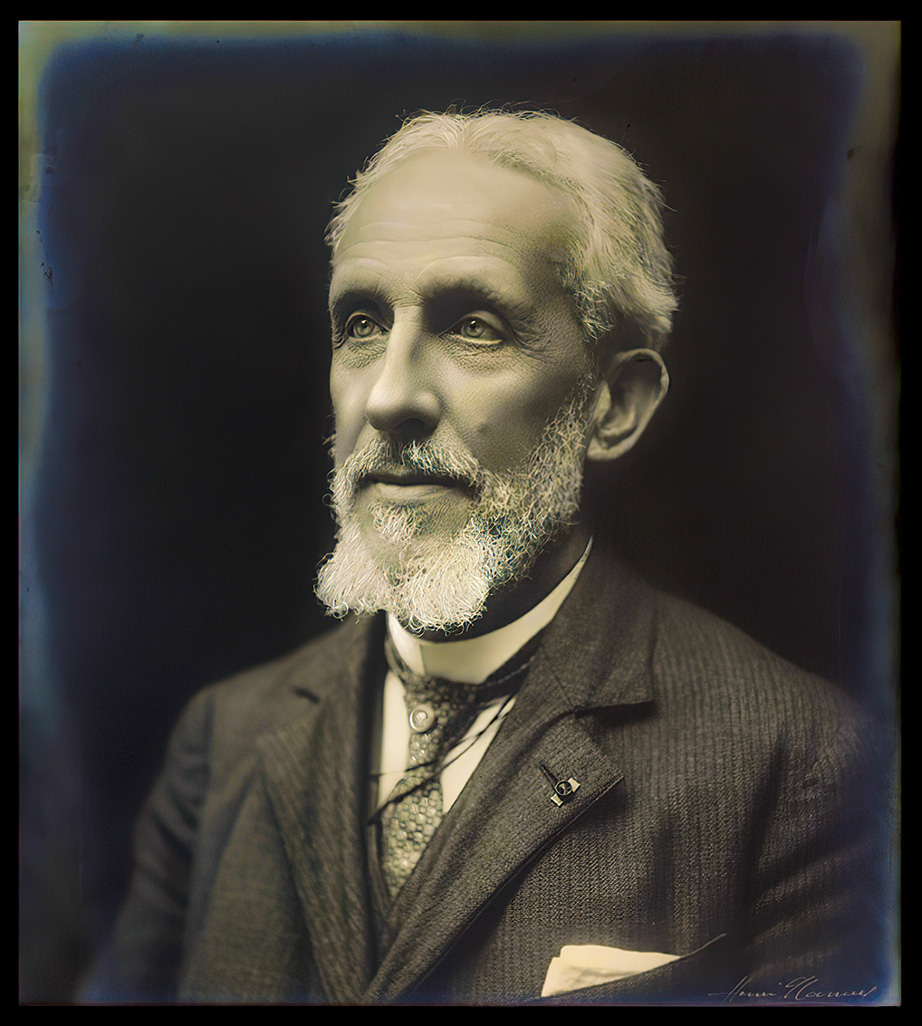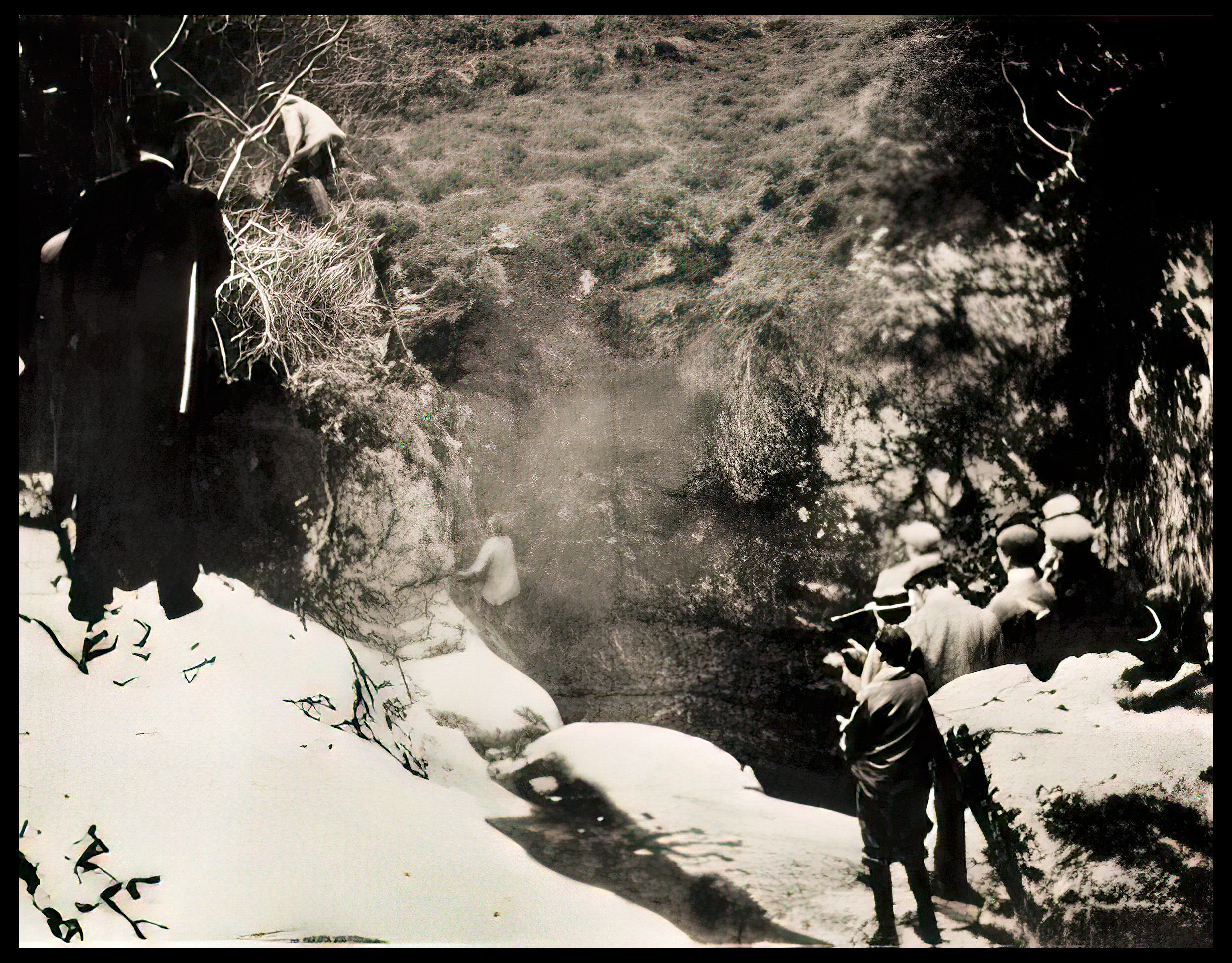
Édouard-Alfred Martel (July 1, 1859 – June 3, 1938), “The Father of Modern Speleology”, was a world pioneer in the study, mapping and documentation of caves. Martel explored thousands of caves in his native France and many other countries, popularized the search for caves, introduced the concept of speleology as a separate field of research, maintained an extensive personal archive and in 1895 founded the Société de Spéléologie (Speleological Society), the first organization dedicated to cave science in the world. The man who dared to descent the entrance pit of Gaping Gill without modern equipment and without expert support, and to risk knots in his safety line, who revealed the vastness and beauty of underground France, who proved the truth about things that seem obvious today about limestone, which taught the French the difference between pure and poisonous water, deserves from some of his humble followers an attempt at an adequate biography.
Short Biography
Edouard-Alfred Martel was born in Pontoise, Seine-et-Oise on July 1, 1859. Born into a family of lawyers, he studied at the Lycée Condorcet in Paris. From an early age he became interested in geography and natural sciences and in 1877 he won first prize in an open competition in geography. An avid reader of Jules Verne’s works, in 1866, while on holiday with his parents, he visited the Caves of Gargas and Eaux Chaudes in the Pyrenees. He later traveled to Germany, Austria and Italy. In 1879, Martel visited the large Postojna cave system in Slovenia.
In 1886, after completing his military service, he received a law degree and became a licensed lawyer at the Seine Commercial Court. Martel spent his free time and vacations traveling around France. From 1883 he began to study the karst plateaus of Causses, formed by the gorges of Tarn, Jonte, Dourbie and Lot. In June 1888, he began his caving career in the Bramabiau gorge in Gard. He and several companions entered a rock cavity where a stream known as Bonheur sinks and reappears farther along the Bramabiau Gorge. That same June with the same team he explored the Dargilan Cave along the Jonte Gorge over a mile away. In 1889 he visited Padirac Cave, near Gramat. He climbed down the entrance chasm and reached an underground river at a depth of 100m. Martel and his cousin Gaupillat set off to explore with a canoe, discovering two kilometres of new passage. Martel later bought the Padirac Cave, and turned it into a show cave.
In July 1890 he married Aline de Launay, sister of Louis de Launay, a professor of geology and future member of the Academy of Sciences. Collaboration with Louis de Launay provided a scientific basis for some of Martel’s publications, including articles in the journal La Nature, which Martel and Launay were later editors. In 1894, he published The Abyss, a book in which he describes the wonders of the underworld he discovered and visited during the six seasons of exploration he undertook from 1888 to 1893. During this period, he visited and indexed more than 230 caves.
In 1895, he ventured further afield and organised an expedition to Ireland and England. He discovered the underground lake of Marble Arch in Northern Ireland. In Yorkshire he made the first complete descent, after a partial descent by Englishman John Birkbeck in 1842, into the pothole of Gaping Gill. He reached the Main Chamber, 170 feet lower than Birkbeck had ventured.[4] That same year, he founded the Speleological Society and started a periodic newsletter, Spelunca.

In 1896, he was invited by the Archduke Luis Salvator, a cousin of Emperor Franz Joseph of Austria, to visit their country. With his foreman and journeyman Louis Armand, he explored several caves on the island of Mallorca. In the Cave of Drach near Porto Cristo he discovered the largest underground lake known at the time.
Martel’s explorations intensified around this time, prioritizing the exploration of the caves of Causses. He also explored the caves and caverns of the limestone regions of Savoie, Jura, Provence and the Pyrenees. He traveled throughout Europe, Belgium, Dalmatia, Bosnia and Herzegovina, Montenegro, where he investigated the course of the Trebišnjica, considered the one of the longest underground rivers in the world.
In 1899 he finally left professional life to devote himself to his scientific research. He served as editor of La Nature from 1905 to 1909 and was a member of the Société de géographie, of which he was elected president. In 1912, he spent three days exploring in Mammoth Cave, Kentucky where he undertook scientific work including barometric determinations of the elevations of the cave’s different levels.
Martel was active in cave exploration from 1888–1914, recording some 1,500 caves during this time.
Edward Alfred Martel died 3 June 1938 in Saint-Thomas-la-Garde, near Montbrison in the Loire.
Throughout his life, Martel strongly promoted the study of speleology, striving to increase its recognition as a scientific field. In his own work, he published some 20 books and 780 articles during the course of his career. At least 53 of his articles were published outside France and several of these were translated into foreign languages. He also made regular trips abroad to conduct lectures on speleological subjects.
In 1895 in Paris, Martel founded the Société de Spéléologie, a scientific organization which would regularly publish articles on speleology in its periodical, Spelunca. The formation of this society was one of the means by which he was able to turn speleology into an internationally recognized science, with many foreign authors publishing articles, many French authors publishing articles on foreign caves and with the society growing to include 33% foreign members by 1909.
